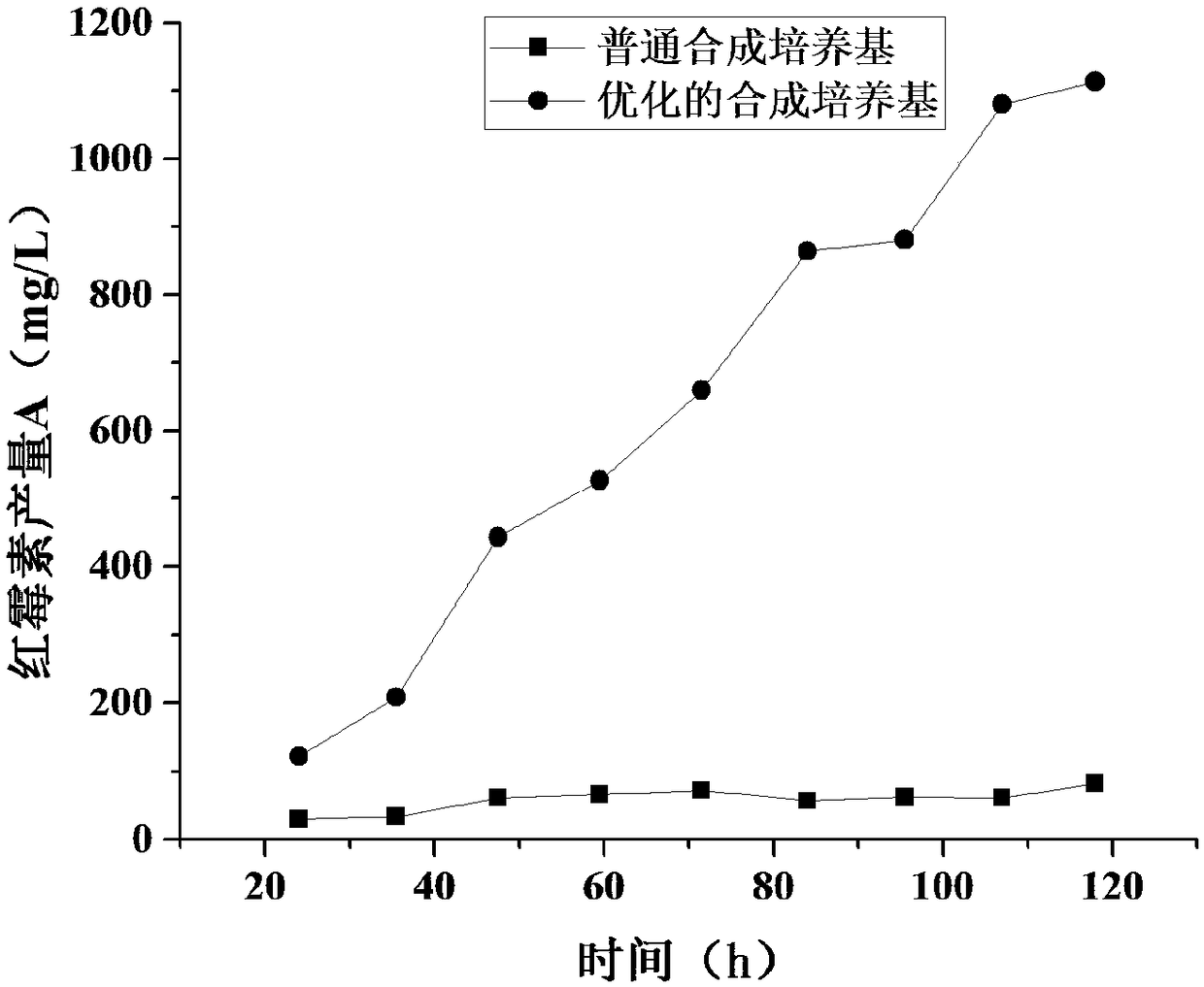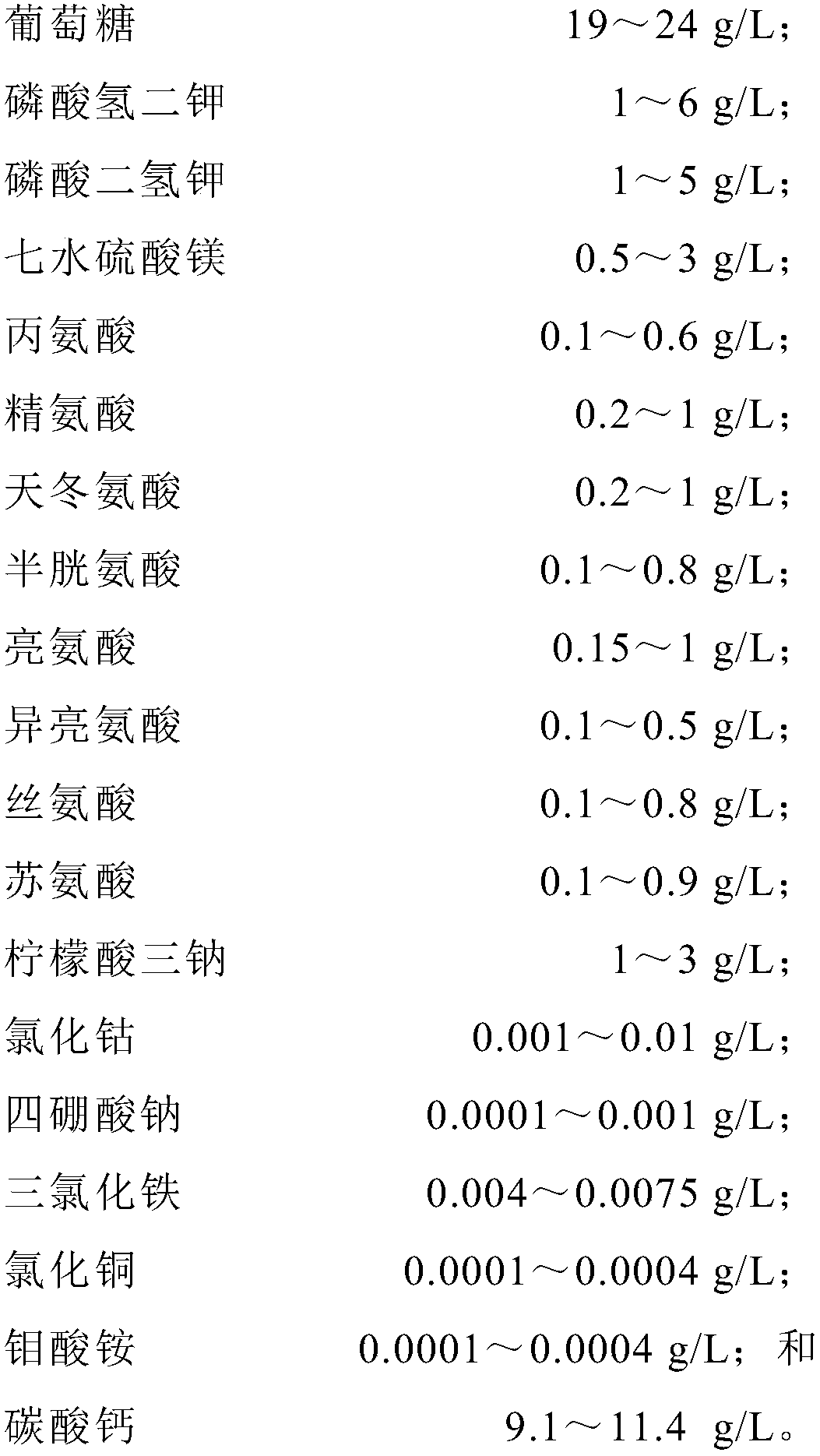Synthetic medium for erythromycin fermentation
A technology for synthesizing culture medium and fermentation culture medium, which is applied in the field of synthetic culture medium for erythromycin fermentation, and can solve the problems of low erythromycin yield and accuracy discount.
- Summary
- Abstract
- Description
- Claims
- Application Information
AI Technical Summary
Problems solved by technology
Method used
Image
Examples
Embodiment 1
[0061] Example 1. Erythromycin A production detection-high-throughput biological method to determine erythromycin production
[0062] Strain used for detection: Bacillus pumilus CMCC(B)63202 was purchased from Guangdong Huankai Microbial Technology Co., Ltd.
[0063] Slope culture medium for detection of bacteria: peptone 0.5%, beef extract 0.3%, dipotassium hydrogen phosphate 0.3%, glucose 1%, sodium chloride 0.5%, agar 2%, pH=7. This medium is used to cultivate the test bacteria (Bacillus pumilus).
[0064] Detection medium: peptone 0.5%, beef extract 0.3%, dipotassium hydrogen phosphate 0.3%, glucose 1%, sodium chloride 0.5%, pH=7.
[0065] Operation steps to determine the yield of erythromycin:
[0066] (1) Eggplant bottle culture: Take out the strains stored in the glycerol tube from the refrigerator at -80°C, draw a line with a bamboo stick, and cultivate it in an incubator at 37°C for 5-6 days.
[0067] (2) Preparation of bacterial suspension: Wash the Bacillus pumilus from the e...
Embodiment 2
[0069] Example 2: Optimization of erythromycin A synthetic medium
[0070] In order to find substances that promote the synthesis of erythromycin, the inventors conducted a large number of screenings in order to find out from a large number of candidates that promote the synthesis of erythromycin. The inventors selected 38 substances (including carbon sources, nitrogen sources, phosphorus sources, inorganic salts, amino acids, precursors, chelating agents, and trace elements) as the basic medium. The used substances and their amounts are listed in Table 1. .
[0071] Regarding the aforementioned preliminary selection of candidate substances, the inventors removed one substance in the medium one by one, and the obtained medium (referred to as medium x) was subjected to the fermentation experiment of red Saccharopolyspora saccharomyces (for the fermentation method, see the previous "Cultivation Method- —48-well plate fermentation culture" part); the final erythromycin yield (C x ) A...
Embodiment 3
[0082] Example 3 Plackett-Burman experiment
[0083] In Example 2, the obtained medium contained 19 components. In order to further obtain the components that have the greatest influence on erythromycin, the present inventors analyzed which of the 19 components have a greater influence on the synthesis of erythromycin through the Plackett-Burman experiment. The Plackett-Burman experimental design is shown in Table 5, and the concentration of each factor is shown in Table 4, where 1, -1 represents the highest and lowest concentration of each component. Saccharopolyspora erythraea was fermented for 120h to determine the concentration of erythromycin in each culture medium. According to Design Expert software, the product concentration is analyzed, and each substance is increased and decreased. Increasing concentrations include: glucose, arginine, aspartic acid, cysteine, leucine, trisodium citrate, cobalt chloride, sodium tetraborate, ferric chloride, calcium carbonate; decreasin...
PUM
 Login to View More
Login to View More Abstract
Description
Claims
Application Information
 Login to View More
Login to View More - R&D Engineer
- R&D Manager
- IP Professional
- Industry Leading Data Capabilities
- Powerful AI technology
- Patent DNA Extraction
Browse by: Latest US Patents, China's latest patents, Technical Efficacy Thesaurus, Application Domain, Technology Topic, Popular Technical Reports.
© 2024 PatSnap. All rights reserved.Legal|Privacy policy|Modern Slavery Act Transparency Statement|Sitemap|About US| Contact US: help@patsnap.com










